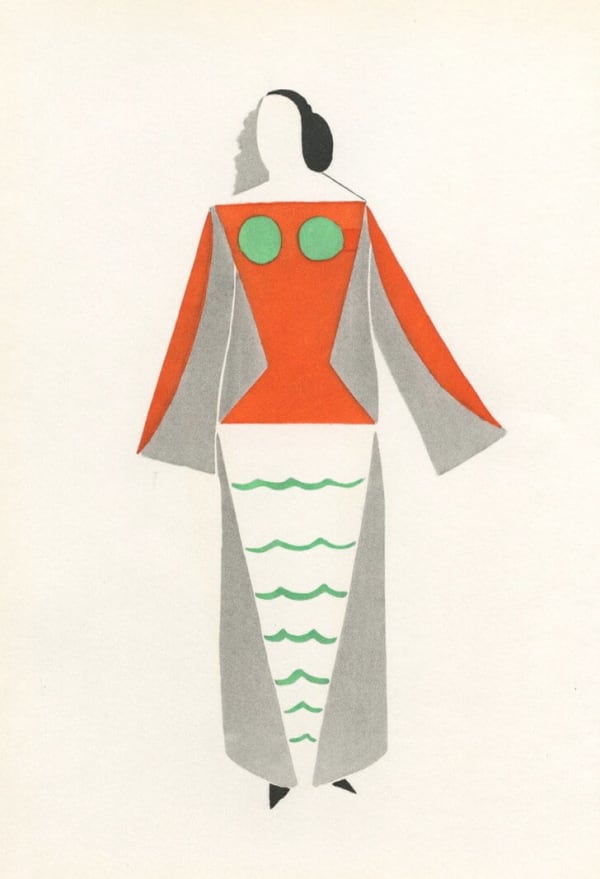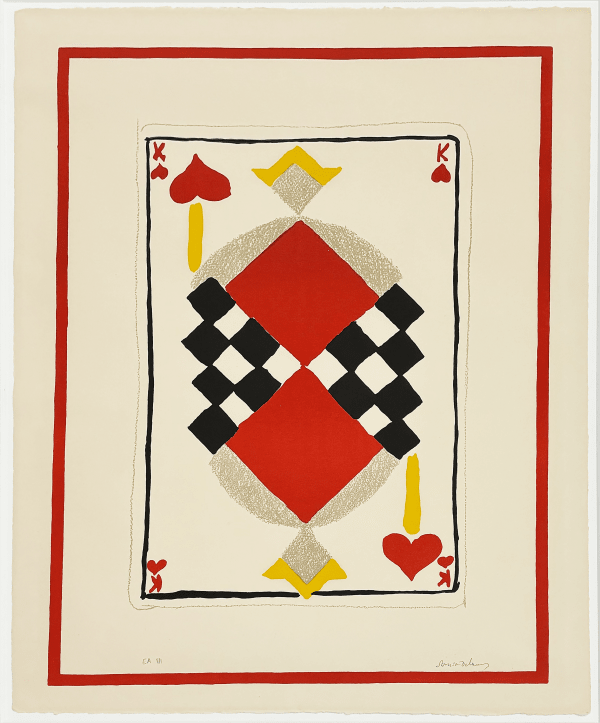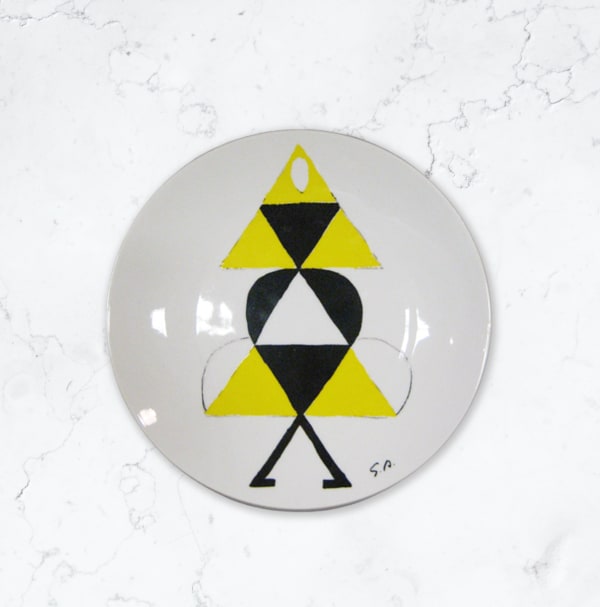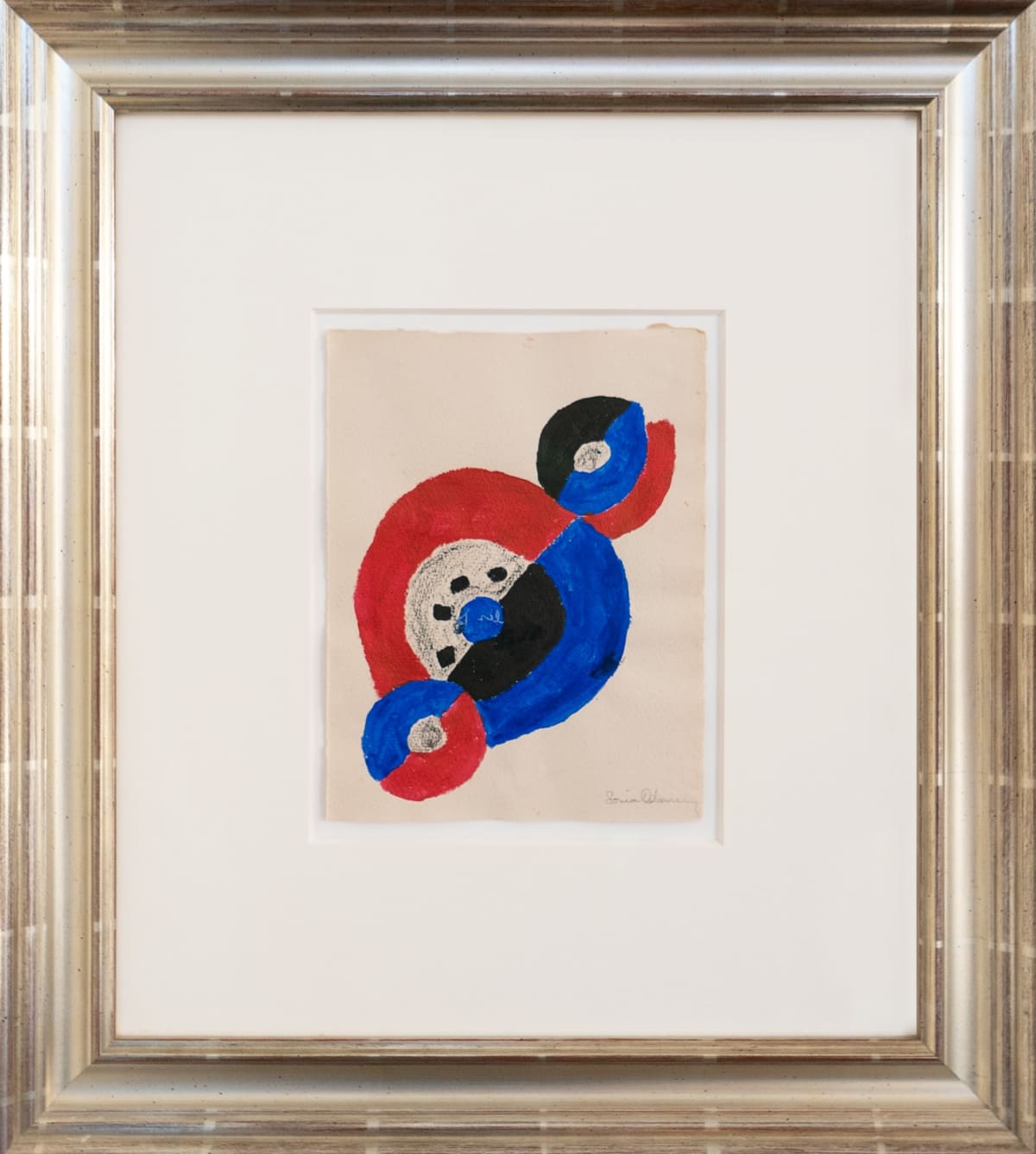Sonia Delaunay French, 1885-1979
-
 Untitled (“Salon de Enfance”), 1966
Untitled (“Salon de Enfance”), 1966 -
 Rythme Colour, 1958
Rythme Colour, 1958 -
 Untitled
Untitled -
 Composition, ca. 1970
Composition, ca. 1970 -
 Composition With Black Arc, ca. 1970
Composition With Black Arc, ca. 1970 -
 Composition With Semi-Circles & Triangles, ca. 1970
Composition With Semi-Circles & Triangles, ca. 1970 -
 Composition, 1970
Composition, 1970 -
 Composition (Carre Rouge), ca. 1970
Composition (Carre Rouge), ca. 1970 -
 Composition, ca. 1970
Composition, ca. 1970 -
 Rythme, 1960
Rythme, 1960 -
 Femme (costume design for Tzara), 1969
Femme (costume design for Tzara), 1969 -
 King of Hearts, 1970
King of Hearts, 1970 -
 La Danseuse Jaune, ca. 1972
La Danseuse Jaune, ca. 1972
Sonia Delaunay (née Terk) was born November 14, 1885. She was a Russian-born, Jewish-French artist who, with her husband Robert Delaunay and others, co-founded the Orphism art movement, noted for its use of strong colours and geometric shapes. Her work extends to painting, textile design, and stage set design. She was the first living female artist to have a retrospective exhibition at the Louvre in 1964, and in 1975 was named an officer of the French Legion of Honor.
Born Sarah Ilinitchna Stern, she was probably born in Gradizhske, located in the then-Russian Empire (today in Poltava Oblast, Ukraine). At a young age she moved to St. Petersburg, where she was adopted by her mother’s brother Henri Terk, an affluent Jewish lawyer, and his wife Anna. She assumed the name Sonia Terk and received a privileged upbringing. She spent summers in Finland and traveled widely in Europe. She attended the Academy of Fine Arts in Karlsruhe, Germany until 1905.
At the age of 20, Terk enrolled at the Académie de la Palette in Montparnasse. She continued to study, work, and live in Paris for the rest of her life. She married Robert Delaunay in 1910 and worked with him to create a new form of Cubism (Orphism). The Delaunays’ friend, the poet and art critic Guillaume Apollinaire, coined the term Orphism to describe the Delaunays’ version of cubism in 1913, which used bright colours and a feeling of rhythm to produce a unique and new world of expression.
During the war years they lived in Spain until their return to Paris in 1921. In 1923, for the staging of Tristan Tzara’s play Le Cœur à Gaz, she designed the set and costumes. In 1924 she opened a fashion studio together with Jacques Heim. During these years she developed her wide-ranging talents in the design of theatrical costume, set design, interiors, textiles, book covers, and fashion, remaining active in these areas for over half a century. In 1966 she published Rythmes-Couleurs (Color-Rhythms), with 11 of her gouaches reproduced as pochoirs and texts by Jacques Damase.














